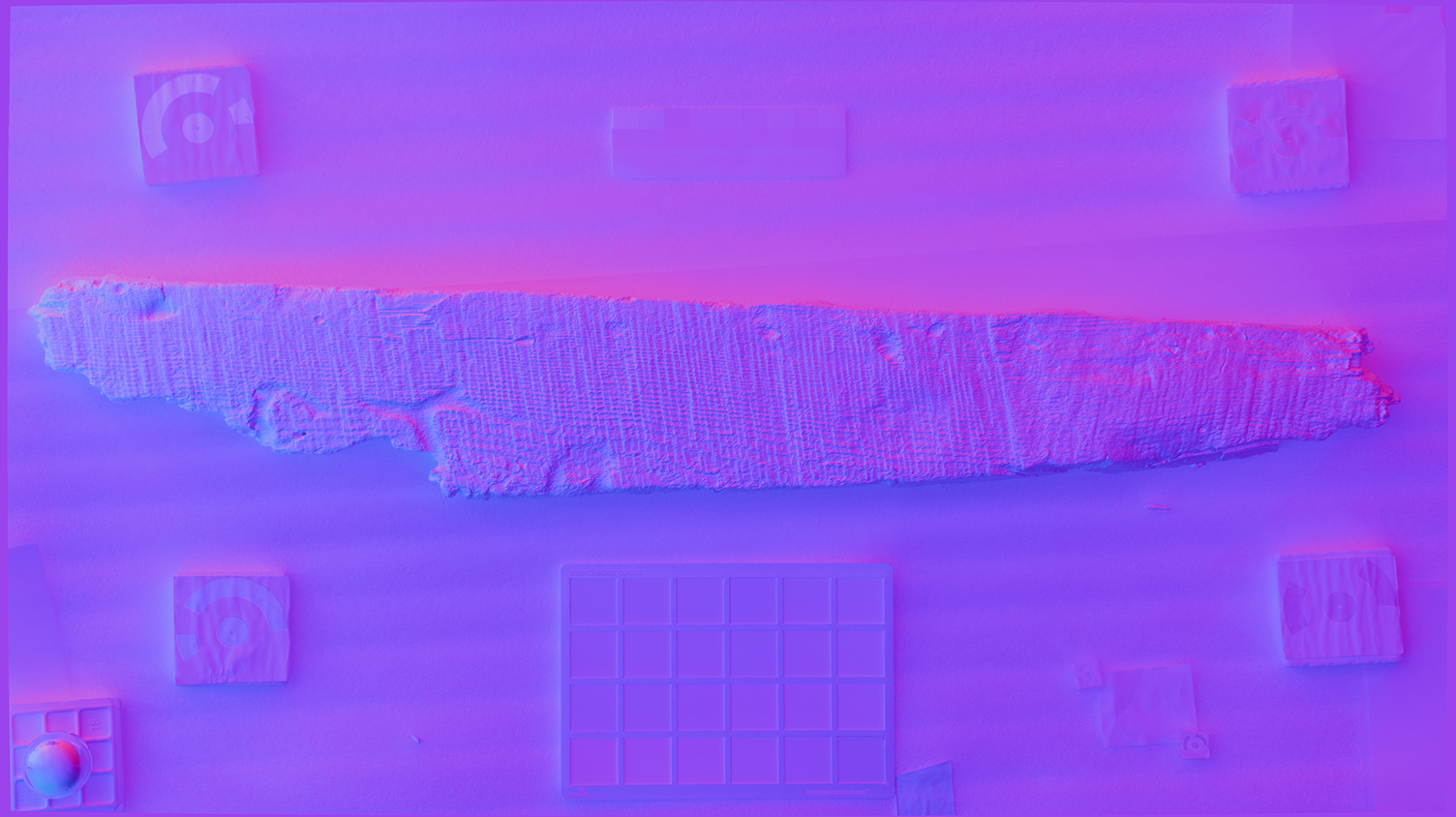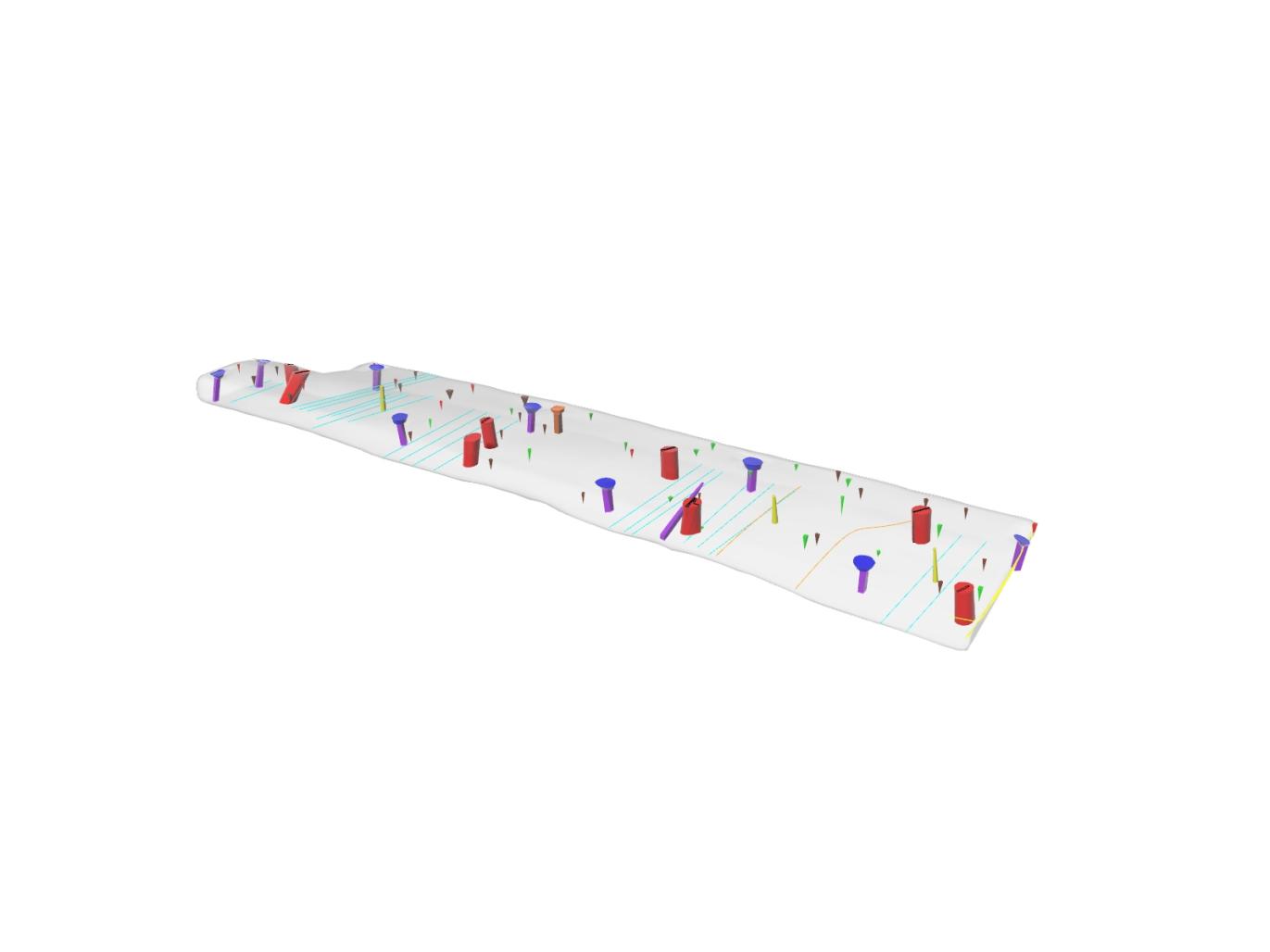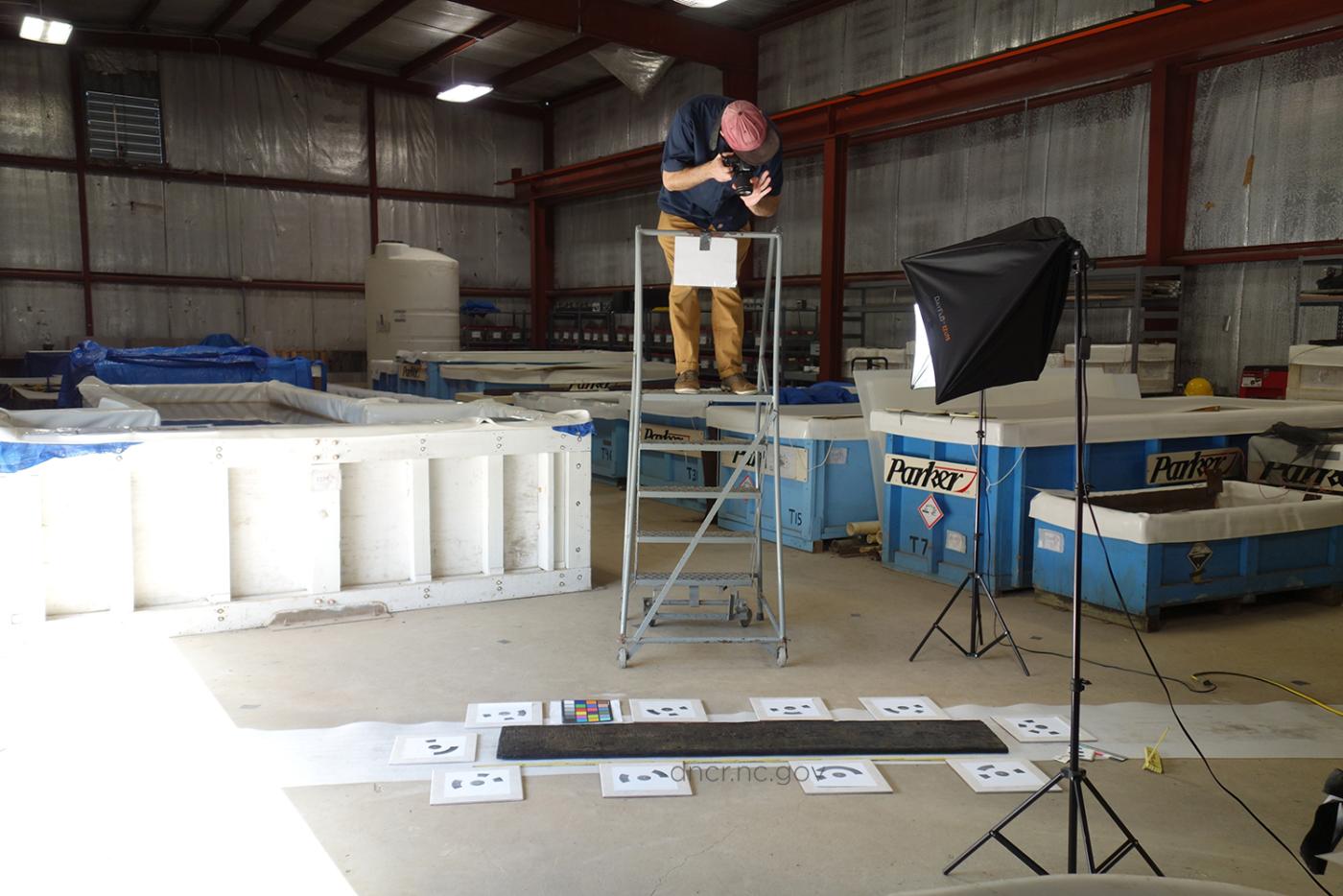Author: Ian Dunshee, ECU Program in Maritime Studies

With experience and an interest in digital approaches to analyzing archaeological artifacts, I developed a research question centered on timbers from La Concorde/Queen Anne’s Revenge. The approach chosen for the project was threefold. Each timber was documented by a high-resolution 3D model created using photogrammetry, Reflectance Transformation Imaging data (RTI) which shows the fine surface details of an object which are difficult to see with the naked eye, and a thorough set of precise measurements of all the toolmarks observed on each surface. This particular combination of methodologies has rarely been applied to such a large assemblage of its kind and allows for the digital reconstruction of each piece as well as the discovery and measurement of toolmarks on its surfaces.

Beginning in the winter of 2022 and continuing intermittently through the summer of 2023, I spent a total of 60 days collecting data with the gracious assistance of a long list of QAR lab staff, students, interns, and volunteers. Contending with the sweltering summer heat, the chill of the winter, and the meticulousness required of the chosen methodology in the lab’s warehouse, everyone involved helped to amass a large amount of new information about 31 of the largest timbers in the assemblage, consisting of 13 hull planks, 12 sacrificial planks, 5 frames, and 1 sternpost fragment. In the end, approximately 32,500 images were needed in order to create the 31 3D models with an additional 18,500 images being used to create 107 composite RTI images. In addition, roughly 1,800 precise physical measurements were also taken.

Requiring nearly three times as long to process as it did to acquire, this near terabyte of data revealed a detailed and never before seen look at QAR timbers through a series of both visual and statistical analyses. New insights into the historic construction, maintenance, and repair of the ship were gleaned from its timbers along with evidence of its deterioration on the seabed. These new images and measurements will also be used to continue to monitor their state of conservation and can be used in a variety of future research projects as well. This study has shown that many of the most exciting things to be learned about the past can be found in some of the most unexpected places and that new technologies can continue to help us find them. Being just one small part of the numerous materials recovered from the QAR site, this extraordinary collection is certainly a sign that this ship still holds many mysteries left to reveal and that the staff, students, interns, and volunteers at the lab might only be a summer away from finding them.
Images:
-Ian photographing a QAR timber. Image by NC Department of Natural and Cultural Resources.
-Results of RTI on a QAR timber, with visible saw marks that would be otherwise obscured. Image processed by Ian Dunshee.
-Ian conducting RTI photography on the sternpost. Image by NC Department of Natural and Cultural Resources.
-Documentation of tools marks and fasteners on a QAR timber. Image processed by Ian Dunshee.
Further Reading:
“Reflectance Transformation Imaging.” Cultural Heritage Imaging. 2025. Accessed August 6, 2025. https://culturalheritageimaging.org/Technologies/RTI/

